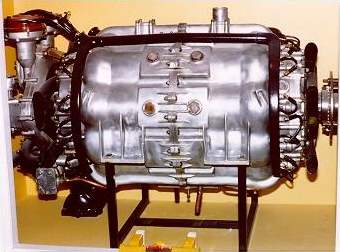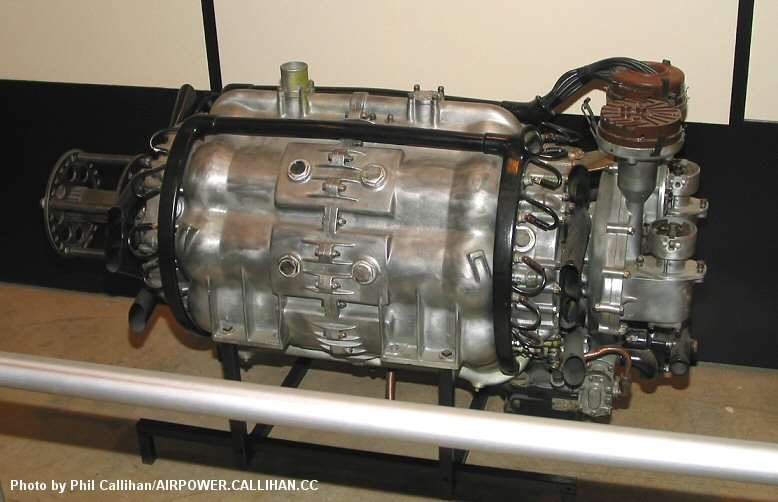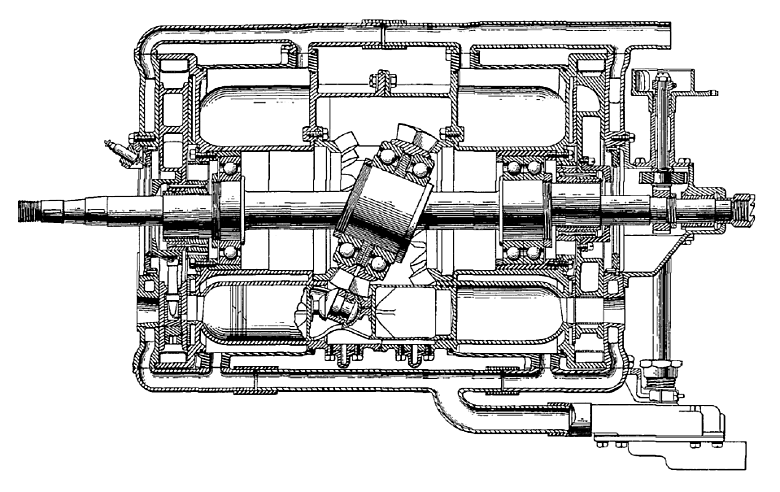I recently saw a video of this. I imagine that this is a 100 year old idea, but there's a fella somewhere who made one that runs. This is probably the coolest odd engine I've seen. It adds another power stroke after the exhaust stroke of a standard 4 stroke engine. it goes:
intake > compression > ignition > (partial?) exhaust > water injection, steam expansion > exhaust
Of course I can't find the video I watched, but that seems super cool. He said he has it running but that's about it. It takes about 50/50 fuel to water and the block stays cool enough to touch. If the goal is to turn heat into power, this seems like a genius idea. All it is is an extra valve and a slower cam. Besides the typical making it work, this also has water in the cylinder which is typically undesirable. The six cycle wikipedia article is not much help... I'd need to read a dozen more wiki articles to understand that article.
Missed this 1st time around:
I played with this back in the '80s when I 1st read about Crower postulating it.
intake > compression > [hydrocarbon ignition] hydrocarbon expansion aka power > hydrocarbon exhaust > [water injection] steam expansion > steam exhaust
You don't "need" an exta valve per say, but it "helps" to have separate valves for hydrocarbon and steam exhaust with other portions of the process i.e. the catalytic convertor would function very well with steam flowing through it.
Electronic direct injection makes this a whole lot easier to "tune" than historic manual injection (we used diesel injectors - which didn't take kindly to running with water).
The drawbacks of the engine:
Water doesn't do well when temperatures go below freezing - you don't want to mix ethylene glycol (antifreeze) with water - burning anti freeze is very bad for engine and/or environment. Air Forces mixed methanol with water to keep it from freezing, but they were injectioning the "water" along with fuel, not part of separate cycle, so the alcohol burned along with the fuel.* Environmentalists would have field day with clouds of unburned methanol coming out of tailpipe. I'm not sure if catalyic converter could process that volume of unburned fuel (you for sure would want a turbine downstream to take advantage of the combustion). If you can solve this issue, it is a viable technology.
You have both the hydrocarbon and exhaust cycles doing nothing but wearing out the engine = less power for given displacement = bigger engine required.
The steam expansion cycle isn't that powerful - there isn't extreme heat (other than hydrocarbon exhaust valve) to boil the water injected. One "power" stroke out of 2 is wimpy = less power for given displacement = bigger engine required.
With current emissions laws, you need dedicate exhaust valve for steam exhaust (3 or 4 valves per cylinder works fine; 1 or 2 for intake (bass ackwards to normal practise - the intakes are smaller than exhaust, as 1 exhaust valve is for hydrocarbons, 2nd is for steam)
You will need extra exhaust piping from engine to muffler (steam expansion is still going to be noisy and your neighbours will appreciate you attenuating the sound).
Your engine's head needs separate ports for each exhaust valve.
The advantages of the engine
No cooling system - you can adjust the amount of water injection to keep temperatures under control - for cold start up, you don't start injecting water until the engine is up to temperature.
Better thermal efficiency - from 40% to >55%
I think it would be cheaper/easier to do an MGU-H/MGU-K solution as used in Formula 1 engines to produce a hybrid drive train - less additional development (F1 engines are in the 55% efficiency range when MGU-H/MGU-K are considered)
* I say fuel as water injection works both in piston and jet engines.


















